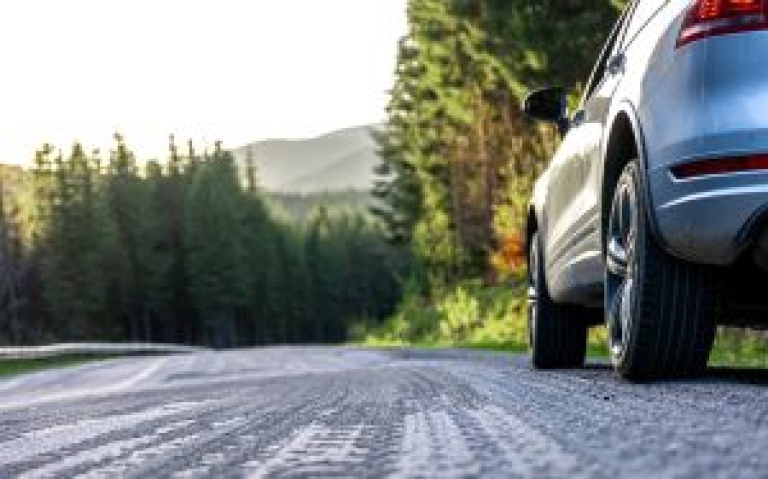Safety tips for snowmobiling in the backcountry
January 4, 2021

Backcountry snowmobiling is increasing in popularity in Canada but can be a high-risk activity. Since you are traveling at a high speed on a heavy machine in an unpredictable natural environment far from emergency services, it is important to take precautions and be prepared for the unexpected. You can have a safe and enjoyable snowmobile trip if you plan ahead and are prepared for any possible emergencies.
Before your trip
- Seek advice from local snowmobilers about what to expect in the area you will be travelling to and arrange for a guide if possible.
- Check weather and road conditions for where you will be going.
- Let someone know where you will be and when you will return.
- Make sure your snowmobile is well maintained and suitable for backcountry riding.
- Make sure your gas tank is full.
- Take an avalanche safety course; many are available online.
What to bring
- Snow gear and lots of layers
- Extra fuel for all snowmobiles
- Matches or a lighter
- Knife, axe, or saw
- First aid kit
- Maps
- Flashlight and batteries
- Whistle
- Extra clothing
- Communications device for areas with no cell reception
- GPS unit and extra batteries
- Compass
- Water
- High-energy snacks
While you ride
- Use 1/3 of your gas for the ride to your destination, 1/3 for being there, and 1/3 for the ride back.
- Be aware of what is going on around you and look for potential hazards.
- Look for landmarks so you do not get lost.
- Do not ride alone.
- Do not have more than one person per snowmobile.
- Wear a helmet.
Common backcountry snowmobiling safety issues
Riding at night
Most snowmobile accidents happen at night and snowmobiling at night is especially dangerous when combined with high speeds. If you are riding after dark, slow down and do not override your headlights. Your headlights will usually let you see around 60 m in front of you. Going faster than 60 km/hr would probably mean you are going too fast to react and stop before hitting an unexpected obstacle.
Alcohol
Alcohol is one of the most common causes of snowmobile accidents and fatalities. Never ride under the influence of alcohol.
Speed
Always make sure you are riding at a speed that allows you to have full control of your snowmobile. It is easy to underestimate your stopping distance, for example, at 72 km/hr, you may need around 272 feet to stop. Excessive speed, especially when combined with alcohol consumption, is a major cause of snowmobile accidents. Check the speed limits for snowmobiles in your area.
Avalanches
Avalanches are usually triggered by people and it is easy for a group of snowmobilers to cause one. Most avalanche fatalities are caused by avalanches triggered by the snowmobilers themselves.
You can reduce your risk of triggering an avalanche by:
- Avoiding steep slopes of 25 degrees or more.
- Crossing slopes one at a time.
- Not travelling in large groups.
- Not riding up a steep slope to help someone because this can trigger an avalanche.
- Parking snowmobiles side by side at the edge of a slope instead of single file at the bottom of a slope.
Off-limits areas
Some areas may be closed due to safety or environmental concerns. Respect closures both for your safety and to preserve the environment.
Kids
Make sure kids receive proper training on how to operate a snowmobile safely so they can have enjoyable trips now and in the future.
Ice
Avoid snowmobiling on rivers and lakes because it is difficult to know whether the ice can support you and your snowmobile. Make sure to wear a buoyant suit if you must cross over frozen water and do not attempt to cross unfamiliar bodies of water. Check ice conditions and avoid slushy ice and ice near moving water.
Other News

Real Insurance Stories from Real People - Langley, B.C., customer Brenda S. explains her claims experience for home insurance with Western Coast
Western Coast Insurance Services Testimonial We’re here to help you through the clai…

You Can Shop Around for Optional Car Insurance in B.C.
Yes, you can buy optional car insurance from private insurers in British Columbia. For basic…
Western Coast Insurance Services Ltd. is a wholly owned division of Western Financial Group Ltd. Insurance products are underwritten by certain licensed insurance companies and are only available throughout British Columbia, Canada.
2025 Western Coast Insurance Services Ltd. All rights reserved.


